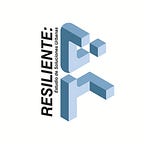The COVID-19 outbreak and the transformation of our public spaces
We are standing in front of a historical opportunity for transforming our cities’ mobility and public spaces. Not harnessing it would get us back to segregation and car culture and thus to its social and environmental consequences.
Aligned with a world that progressively moves ahead of the pause required to contain the COVID-19 outbreak, we need to transform our public spaces. As social distancing restrictions have been lifted after many countries have come through the first epidemic wave, the importance of having ample public spaces for moving and socializing keeping safe distance has become evident. Likewise, widening areas for active mobility have proven to be useful for reducing public transportation demand.
In Latin America, the most recent epicenter of the pandemic, Bogota, took the lead by implementing the first pop-up cycle lanes during March of the present year. These aimed not only to promote cycling commuting but also to reduce the high levels of pollution that clashed with the beginning of the quarantine in that Colombian city. Such pop-up cycle lanes that later were replicated in Lima, Mexico City, Quito, Guadalajara and many other cities in the region, now are common also in North America and Europe.
Different local and national governments around the world have established emergent measures to transform public spaces and strengthen non-motorized mobility:
- In the United Kingdom, the central government has committed to invest more than two million British pounds (around 2,500 million dollars) to promote pedestrian and cycling infrastructure.
- The city of Rotterdam, in the Netherlands, has announced an investment of 233 million euros (approximately 260 million dollars) to increase its green areas during the following 10 years.
- In Mexico, the federal government released a Mobility Plan supported by more than 100 civil society organizations and integrated by proposals for a better post-COVID built environment.
- In the United States, the National Association of City Transportation Officials (NACTO), integrated by 81 cities and transit agencies, has prepared a guide with street intervention strategies for responding and recovering from the pandemic.
All these initiatives address a series of demands that for decades have been part of urban agendas, such as establishing cycle lanes, widening sidewalks, and reducing traffic speed.
The COVID-19 crisis has made us face a historical opportunity for transforming the public spaces and the mobility of our cities. Our response to this pandemic could determine the accomplishment of the United Nations’ New Urban Agenda and in general the performance of the current urban resilience and sustainability agendas during the first half of the present century.
We, RESILIENTE, believe that it is essential to harness this opportunity. Missing it would get us back to the segregation and car culture and thus to its environmental and social consequences.
If you want to know more about RESILIENTE send us an email to resiliente.estudio@gmail.com or join our community through the following link:
We are also on Instagram, Twitter, Facebook, and on our webpage resilienteestudio.com.
About RESILIENTE: Urban Solutions Studio
We are a team of professionals specialized in urban planning and resilience. Our work aims to mitigate and solve cities challenges, centered on the experience of their inhabitants. We collaborate with governments, businesses, and organizations designing plans and projects oriented to build resilience in communities, neighbourhoods, and cities.
